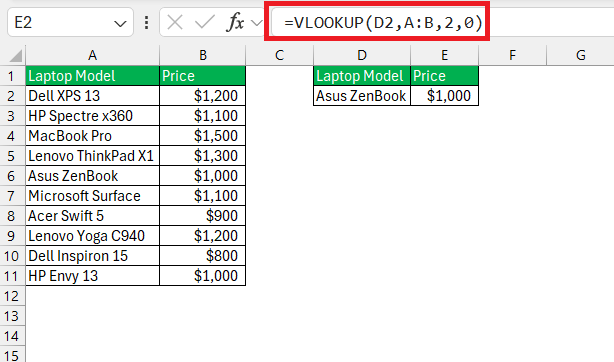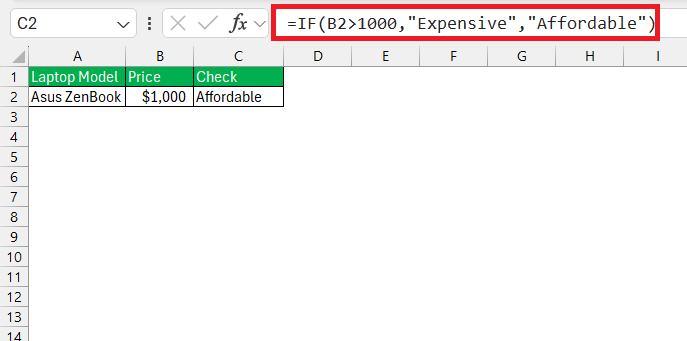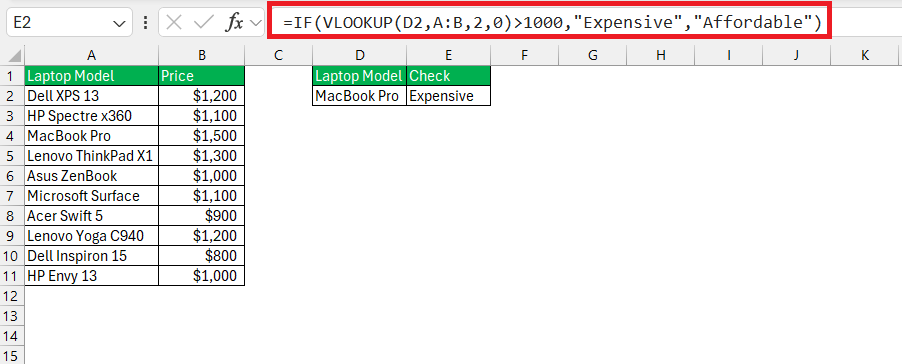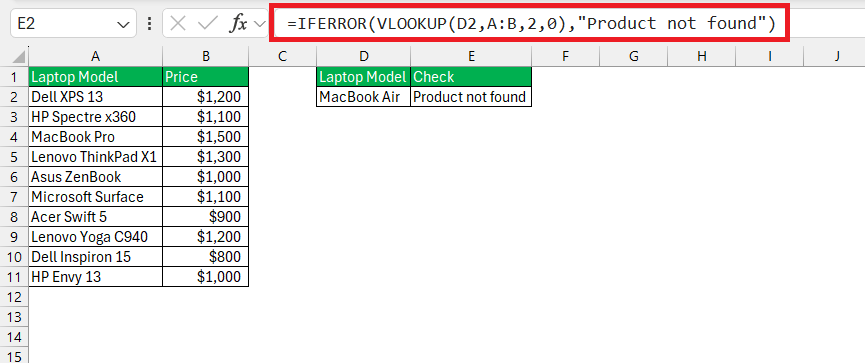Unlock the full potential of Microsoft Excel by mastering two essential functions: VLOOKUP and IF statements. These powerful tools offer dynamic data analysis and decision-making capabilities, revolutionizing the way you work with spreadsheets. Whether you’re a beginner or an experienced user, understanding these functions can significantly enhance your productivity and efficiency in Excel.
Key Takeaways:
- VLOOKUP Mastery: Learn to retrieve data efficiently from large datasets using VLOOKUP, a cornerstone of Excel manipulation.
- Dynamic Decision Making: Discover how IF statements introduce conditional logic into spreadsheets, enhancing data analysis capabilities.
- Synergistic Analysis: Combine VLOOKUP and IF statements to handle errors, make conditional calculations, and derive insights across various scenarios.
- Advanced Techniques: Delve into techniques for categorizing data, concealing errors, and refining search criteria for precise data retrieval.
Table of Contents
Diving into Basic Functions
Understanding the Versatility of VLOOKUP
VLOOKUP, an abbreviation for “Vertical Lookup,” is a robust function crafted to seek out a value within the initial column of a table array and provide the associated value from a designated column within the same row. Its syntax is relatively straightforward:
=VLOOKUP(lookup_value, table_array, col_index_num, [range_lookup])
- lookup_value: The value to search for in the first column of the table.
- table_array: The range of cells that contains the data. It must include the column from which to return the value.
- col_index_num: The column number in the table_array from which to retrieve the value.
- range_lookup: An optional argument that specifies whether to find an exact match or an approximate match. Enter TRUE for an approximate match or FALSE for an exact match. If omitted, it defaults to TRUE.
VLOOKUP is invaluable for tasks like merging data from different sources, such as combining sales data from one spreadsheet with customer information from another. It’s also commonly used for creating dynamic reports, where data needs to be fetched from a table based on certain criteria.
Leveraging the IF Function:
The IF function is a logical function that evaluates a condition and returns one value if the condition is true and another value if it’s false. Its syntax is:
=IF(logical_test, [value_if_true], [value_if_false])
- logical_test: The condition you want to evaluate.
- value_if_true: The value to return if the condition is true.
- value_if_false: The value to return if the condition is false.
IF statements are fundamental for introducing decision-making capabilities into your spreadsheets. They allow for dynamic data processing based on specific criteria. For instance, you can use IF to categorize products as “Expensive” or “Affordable” based on predefined thresholds.
Unlock Excel’s Potential: Mastering VLOOKUP and IF Statement
Why Combining VLOOKUP and IF Transforms Your Data Analysis
Combining VLOOKUP and IF statements in Excel can significantly enhance your data analysis process. It allows you to look up and retrieve information based on specific criteria, providing a more robust and dynamic approach to dealing with data.
You gain the ability to handle errors gracefully, make calculations conditional, and derive insights that are responsive to varying scenarios. It’s almost like having a diligent assistant who checks each value carefully and makes smart decisions on the fly.
Contextualizing the Power of VLOOKUP and IF within Excel
The VLOOKUP function in Excel is renowned for its ability to search for a specific value in one column and return a corresponding value from another. When you introduce the IF function to the mix, you’re giving your spreadsheet the power of decision-making.
This context-driven power is akin to setting up a series of ‘if this, then that’ rules that apply only under certain conditions you define, enhancing data accuracy and relevancy in your reports and analysis. It’s a game-changer for those who deal with dynamic datasets where the conditions and criteria for data retrieval can shift.
Enhancing Data Intelligence with VLOOKUP and IF
Crafting Vlookups and IF for Advanced Analysis
The true power of Excel unfolds when you combine functions to perform complex analyses. VLOOKUP and IF often work hand in hand to manipulate data efficiently. For example, you can use VLOOKUP to fetch data from a table and then apply an IF statement to categorize the retrieved values based on certain conditions.
Consider a scenario where you have a list of products along with their prices, and you want to categorize them as “Expensive” or “Affordable” based on a predefined threshold (say $1000). You can achieve this by nesting an IF function within a VLOOKUP like so:
=IF(VLOOKUP(D2,A:B,2,0)>1000,”Expensive”,”Affordable”)
Here, Product is the lookup value, PriceTable is the table array, and Threshold is the predefined value. This formula fetches the price of the product using VLOOKUP and then compares it against the threshold using IF.
Concealing Error Values Gracefully in Lookup Operations
When you’re neck-deep in data, encountering error values such as ‘#N/A’ can disrupt your flow. Fortunately, pairing the IF function with VLOOKUP enables you to camouflage these errors gracefully. By using the IFERROR or IFNA functions, you can replace error messages with alternative text, like “Item not found,” or even a blank cell.
This keeps your worksheets looking professional and uncluttered, and it ensures that errors don’t throw a spanner in the works of downstream calculations or data visualizations.
FAQs on Fine-Tuning Excel Proficiency
Can VLOOKUP and IF be Used for Error Handling?
Absolutely! VLOOKUP and IF are a powerful combo for error handling in Excel. Often, errors arise when a specified value isn’t found; VLOOKUP returns an ‘#N/A’ error in such cases. Wrapping VLOOKUP in an IFERROR or IFNA function allows you to specify a custom result, like a message or a zero, instead of showing an error, making your spreadsheets user-friendly and error-resilient.
What Are Some Alternatives to IFNA and ISNA Functions?
Alternatives to IFNA and ISNA functions include IFERROR, which handles all error types, not just ‘#N/A’. Also, you have the XLOOKUP function, a versatile replacement for VLOOKUP that includes built-in error handling and can search in any direction. For complex conditions, the IFS function can streamline your formula without the need for multiple nested IFs. These tools can help maintain a clean, error-free spreadsheet and make your formulas simpler and more efficient.
Can You Perform a Left Lookup Using VLOOKUP and IF?
Performing a left lookup using VLOOKUP requires a workaround because VLOOKUP is designed to search to the right. To search left, you’d combine VLOOKUP with the CHOOSE or INDEX and MATCH functions. IF can be used in conjunction for additional conditions or error handling but isn’t directly involved in performing the leftward search. The combination of these functions allows flexibility and expands the possibilities of data retrieval in Excel.
Is it possible to perform a VLOOKUP with two conditions?
Yes, you can perform a VLOOKUP with two conditions by using an array formula or nesting multiple IF statements within the VLOOKUP. For the array formula method, you’d combine conditions within curly braces and use an array-entered function. Alternatively, you could concatenate the conditions into a helper column and then run a VLOOKUP on that column. Both methods allow you to refine your search criteria and ensure that your lookup is as specific and accurate as possible.
What is VLOOKUP function in Excel?
The VLOOKUP function in Excel is a powerful tool used to search for a specified value in the first column of a table and then return a corresponding value from another column in the same row. Specifically, it stands for ‘Vertical Lookup’ and is organized to work with data that is listed vertically, making it highly useful for finding specific data within large datasets. The function requires at least three arguments to specify the lookup value, the table range, and the column index from which to retrieve the corresponding value, with an optional fourth argument to specify an exact or approximate match.
John Michaloudis is a former accountant and finance analyst at General Electric, a Microsoft MVP since 2020, an Amazon #1 bestselling author of 4 Microsoft Excel books and teacher of Microsoft Excel & Office over at his flagship MyExcelOnline Academy Online Course.











